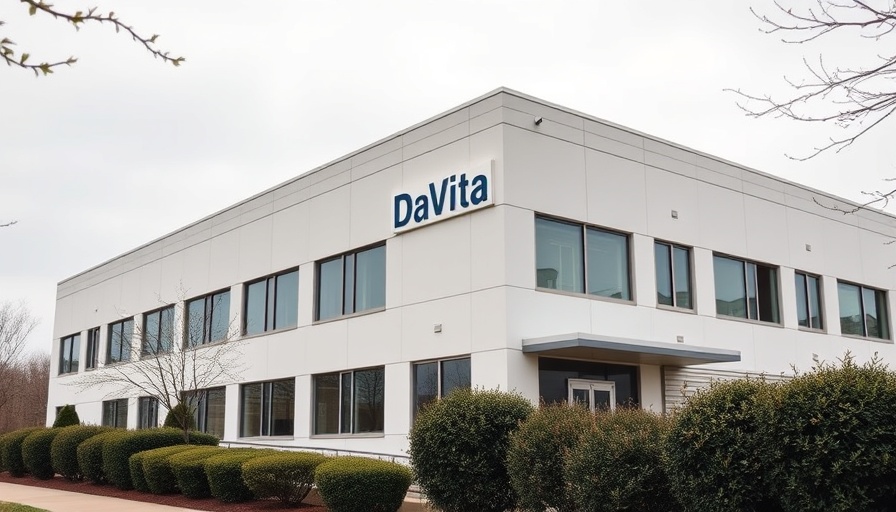
The Growing Threat of Ransomware in Healthcare
The recent ransomware attack on DaVita, a prominent kidney care provider, has raised serious alarms within the healthcare sector. With sensitive data from 2.7 million individuals compromised, this incident is among the largest healthcare breaches of 2023, and it underscores a grim reality: ransomware attacks are becoming increasingly sophisticated and prevalent.
According to reports, hackers gained unauthorized access to DaVita's servers in April, and by June, they had leaked sensitive patient information, including personal details and clinical data. The hacker group Interlock has been linked to this attack, highlighting a troubling trend: healthcare organizations are often dark-horse targets for cybercriminals, likely due to the sensitive and valuable nature of the data they hold.
How the Attack Impacted Patient Care
Fortunately, DaVita managed to continue patient care throughout the attack. However, the breach has severely affected its operational aspects, leading to steep unforeseen costs exceeding $13.5 million in the second quarter alone. These damages include increased patient care costs and significant general administrative expenses, which have raised concerns about potential disruptions to patient services and care quality.
This incident serves as an important reminder about the vulnerabilities within the healthcare sector, making it imperative for organizations to enhance their cybersecurity measures. Failure to do so could place patients' personal and medical information at severe risk and diminish trust in healthcare providers.
Broader Implications for Healthcare Providers
The ramifications of this attack extend far beyond DaVita. It reflects a larger pattern seen across the healthcare landscape, where cyberattacks can disrupt not just patient services but also billing and revenue collection processes. Experts have warned that more organizations may soon find themselves in similar situations unless robust safeguards are implemented.
The FBI and other cybersecurity authorities alarmingly noted that groups like Interlock are targeting not just healthcare but also critical infrastructure sectors across North America and Europe. Therefore, heightened vigilance and enhanced protective measures are not merely advisable but essential.
Addressing the Vulnerability: Prevention and Response
So, how should healthcare organizations react to this rising threat? First and foremost, they need to prioritize cybersecurity training for all employees. Cyber risks do not simply originate from external sources; often, they can emerge from within an organization due to employees' mistakes or negligence.
Moreover, implementing advanced security measures such as data encryption, multi-factor authentication, and regular system updates can markedly reduce the risk of breaches. In conjunction with these measures, having a robust incident response plan is critical. Such a plan should focus on minimizing damage and swiftly restoring access to operations to prevent long-lasting impacts on patient care.
The Community’s Role in Health and Wellness
In times like these, the concept of community health and wellness becomes increasingly vital. Engaging with health and wellness businesses and attending local health and wellness events can enhance public awareness and provide resources to guide individuals and families in safeguarding their health data. Knowledge is power, and educating the community about these risks can help create a proactive environment that focuses on prevention.
In addition, collaborative platforms where local healthcare providers can share insights and strategies can form an essential backbone in fighting security challenges as a cohesive unit.
Conclusion: The Urgency for Cybersecurity in Healthcare
The DaVita ransomware attack serves as a wake-up call for the healthcare industry about the dire need for enhanced cybersecurity measures. As more organizations, including those pertinent to community health and wellness, fall victim to cybercriminals, emphasizing the importance of cybersecurity training and preventive actions cannot be overstated.
In conclusion, as we navigate this complex landscape, it is crucial that patients, healthcare providers, and community wellness advocates come together. By fostering dialogue and championing collective preparedness, we can mitigate the risks posed by cyberattacks and ensure better security for everyone's health and wellness data.
If you'd like to stay informed about the evolving landscape of health and wellness, consider subscribing to relevant health blogs, attending wellness events, or getting involved with your local health initiatives.
 Add Element
Add Element  Add Row
Add Row 



Write A Comment